|
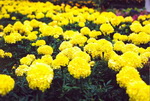 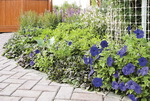 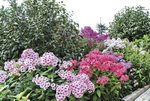
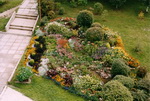 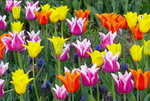 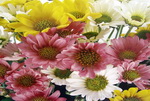
Emotional, psychological and even physical influence of colour on a man’s eye – is an extremely important factor for drawing up a successfully solved colour composition of a garden. Looking at this or that colour the observer can feel the sense of satisfaction like a gourmet with a testy bit in his mouth, or irritation what we feel from a hot dish". The garden’s colour is defined by set of all elements and objects located in its territory these are materials of fences and external walls of buildings, covering of paths, illumination, water presence, an internal decor of premises and, of course, plants in combination with character of ground cover. Competently grouped garden plants, changing seasonal colouring of foliage and flowering train, will "update" appearance and mood of your garden within all year. In general the colour palette of a garden consists of about 130 shades. The general colour of landscapes doesn’t vary three times a year as many people think, but not less than nine times.
The general reaction of a person on colours and defined on the basis of generalization of some scientific supervision can combine their symbolic to below-mentioned definitions.
Yellow - active, vigorous and easy. Symbolizes light, pleasure, luxury; bright yellow - envy, hatred, falsity.
Orange - warm, positive, causing pleasure. Symbolizes heat, pleasure, sun.
Red - the most mobile and live colour, makes sensation of purposeful power; light shades of the red operate excitingly, offensive, dark - is serious, solid. Symbolizes life, blood, love, passion, heat, fire.
Violet - rich, but sad, at the big surface can have a negative effect. Symbolizes advantage, luxury.
Dark blue - silent, self-deepened, concentrated; blue tones operate as clear, pure, virgin. Symbolizes infinity, heavens, grief.
Green - quiet, peace, passive; light green - recovered, cheerful; dark green - cold, constrained. Symbolizes rest, balance, fertility.
White - neutral, operates on a person as great silence. Contrasts with all dark colourings, in motley combinations brings light and revival, increases dimensions. Symbolizes cleanliness, innocence, chastity.
Black - outwardly the most silent colour against which any other colour sounds more strongly and more precisely. Symbolizes mourning, grief, solemnity.
Grey - motionless, silent, hopeless. Symbolizes mechanism, the standard.
Such colour characteristics cannot be accepted as priori, since different nationalities and in different climatic zones of globe have deviations from standard representations. For example "wedding" white colour in some countries is considered mourning. In Vietnam white – is the symbol of treachery, and black - boldness. In countries with a droughty climate green colour is considered "strong". However researches show that as a whole people equally react on colours. Red, yellow, green and dark blue are focus colours for man. Exactly these colours are preferred by children, before they start to speak, avoiding "the boundary" colours lying between them. The names of focus colours are first that appear in speech. Our perception of colour also changes from character of illumination - natural - day and evening, electric. The human eye is arranged in such a manner that in twilight the majority of colours are badly distinguishable (merge), and objects which look dark blue in the afternoon, will seem brighter than the objects which look red at daylight.
Skillfully operating with colour properties, is possible to achieve many interesting effects in a garden, giving to its each corner a special mood.
See also: The Flower Clocks, Flowering Regulation
|
